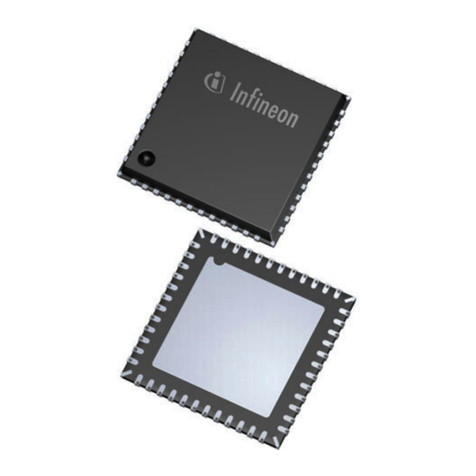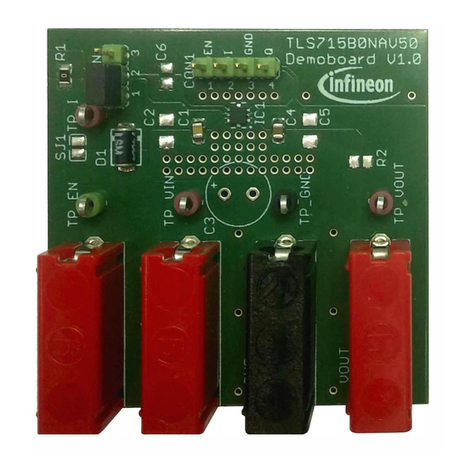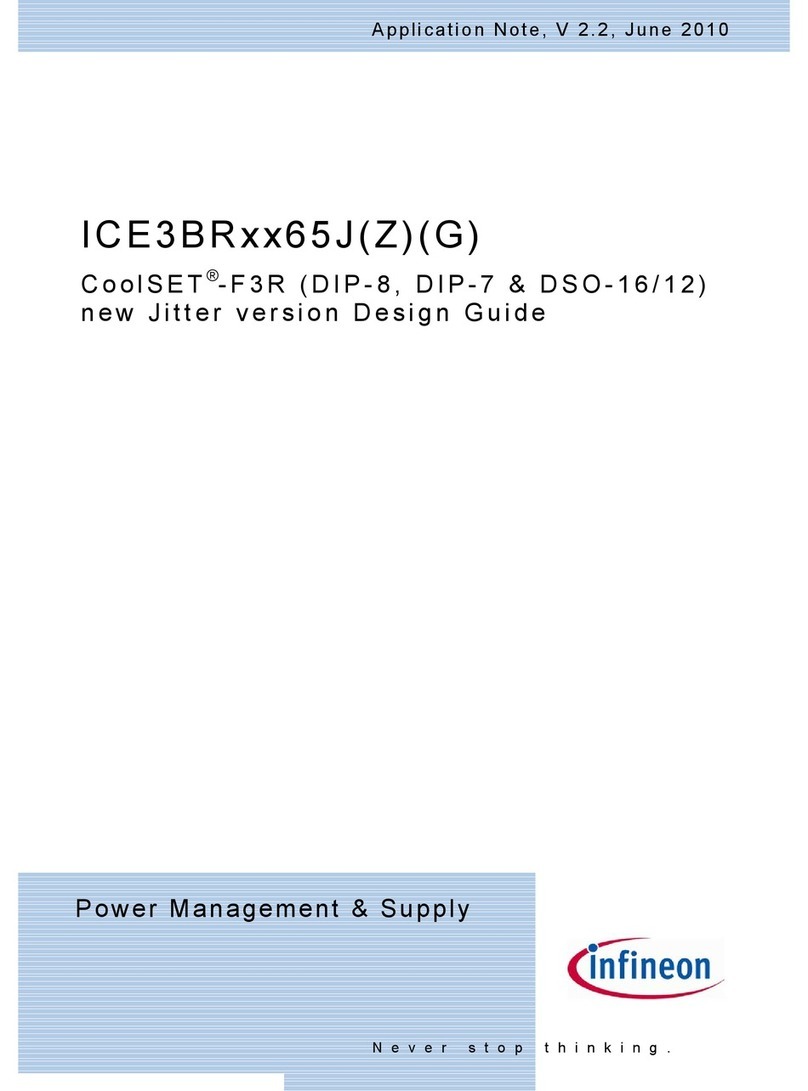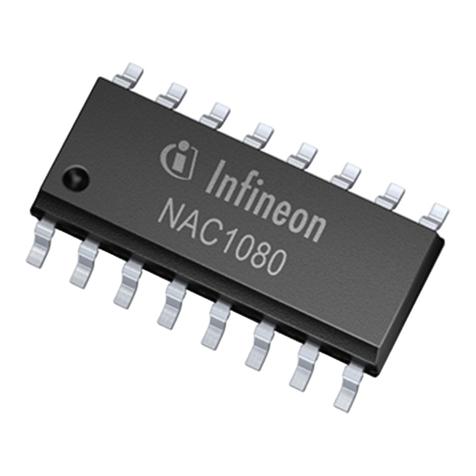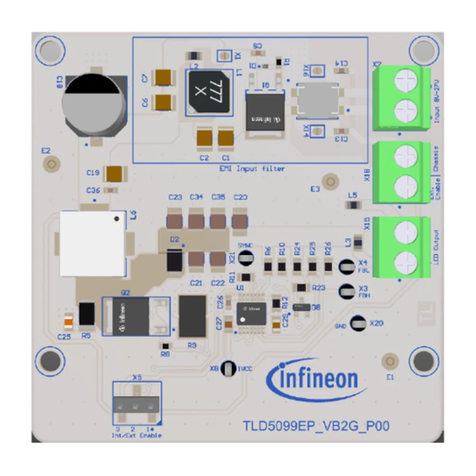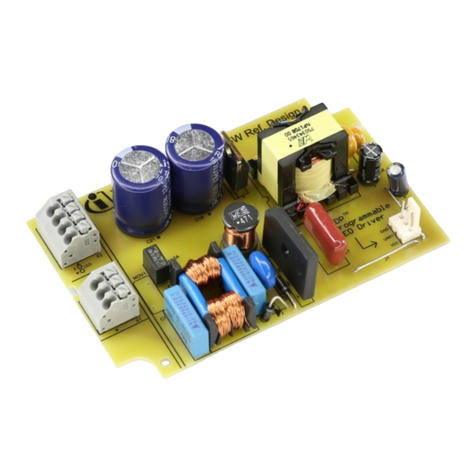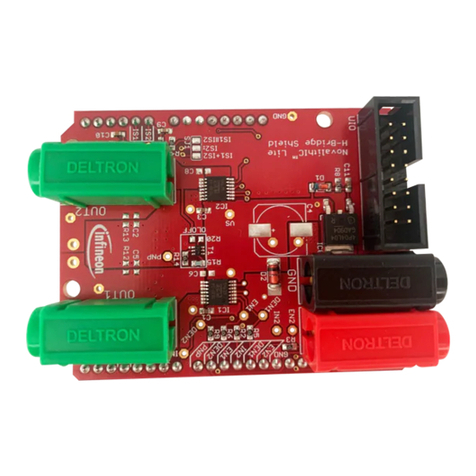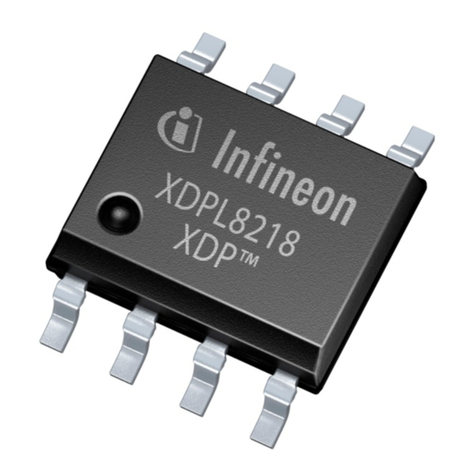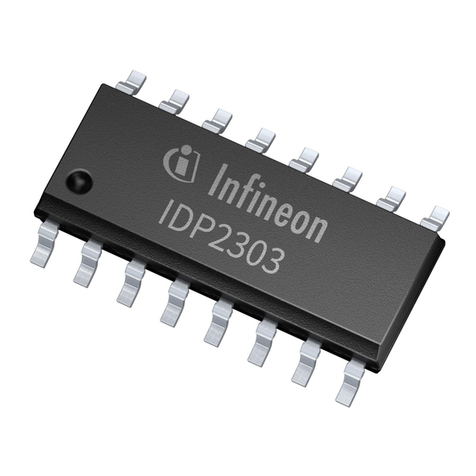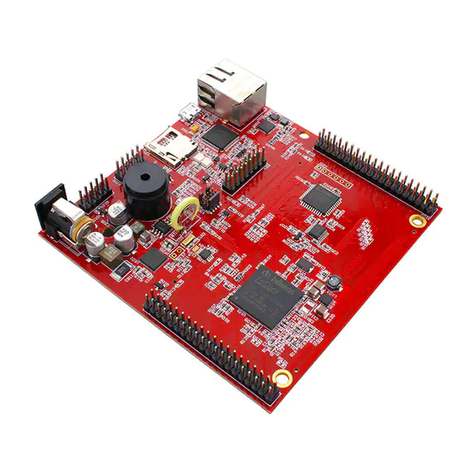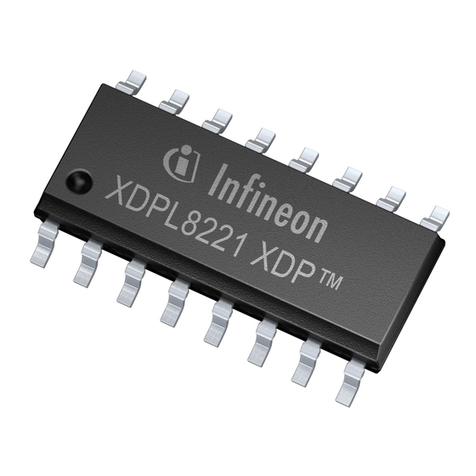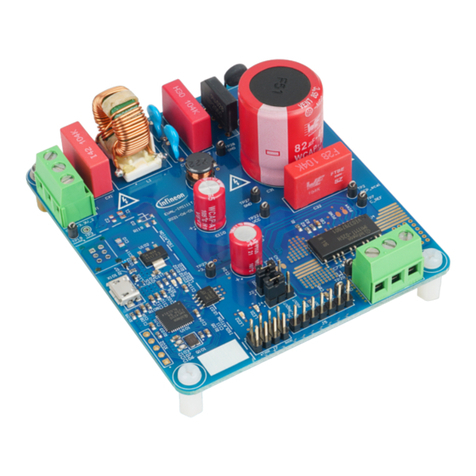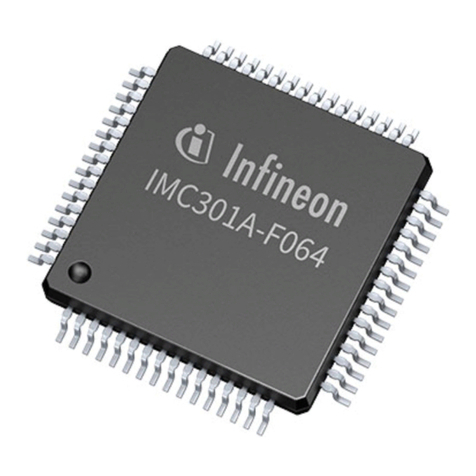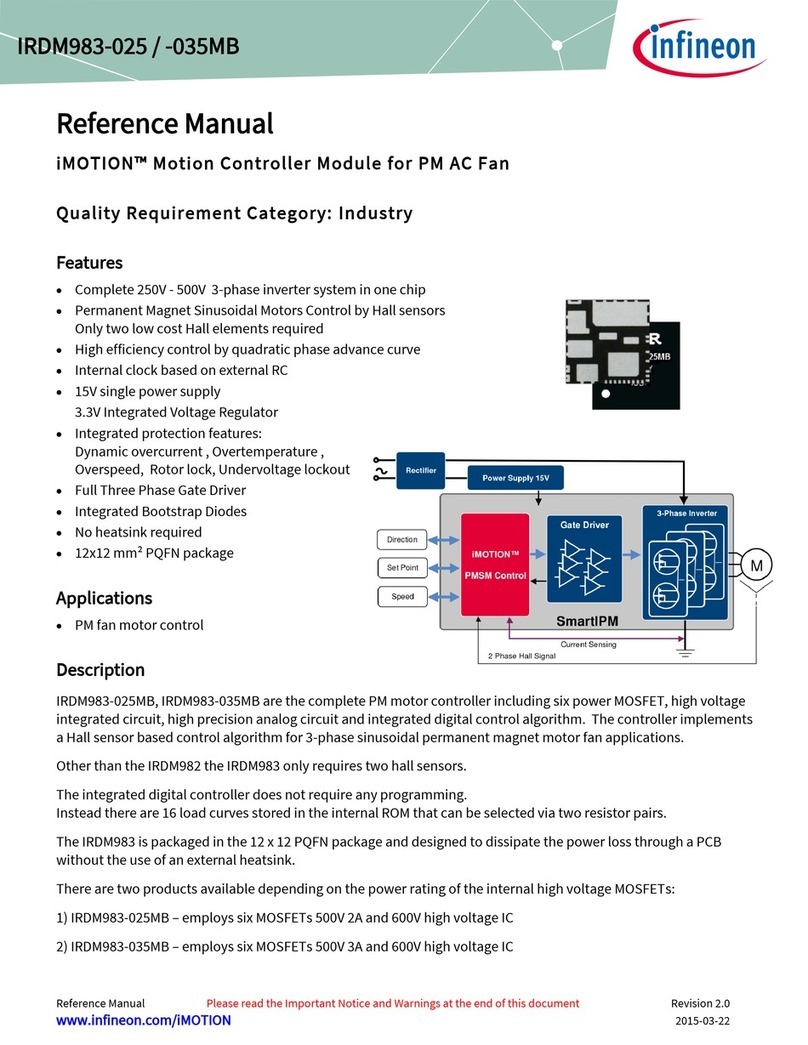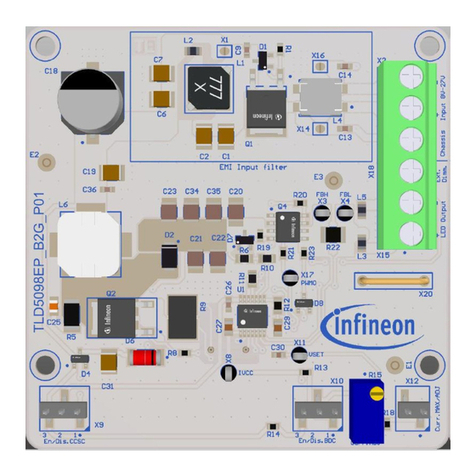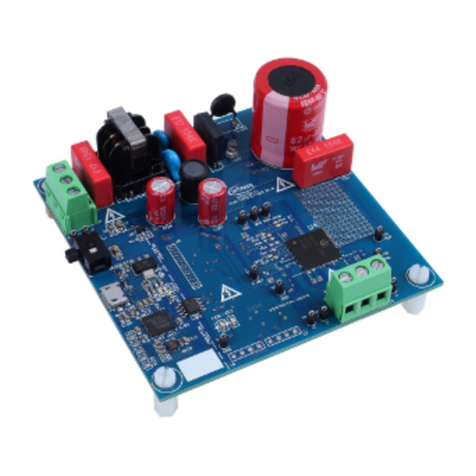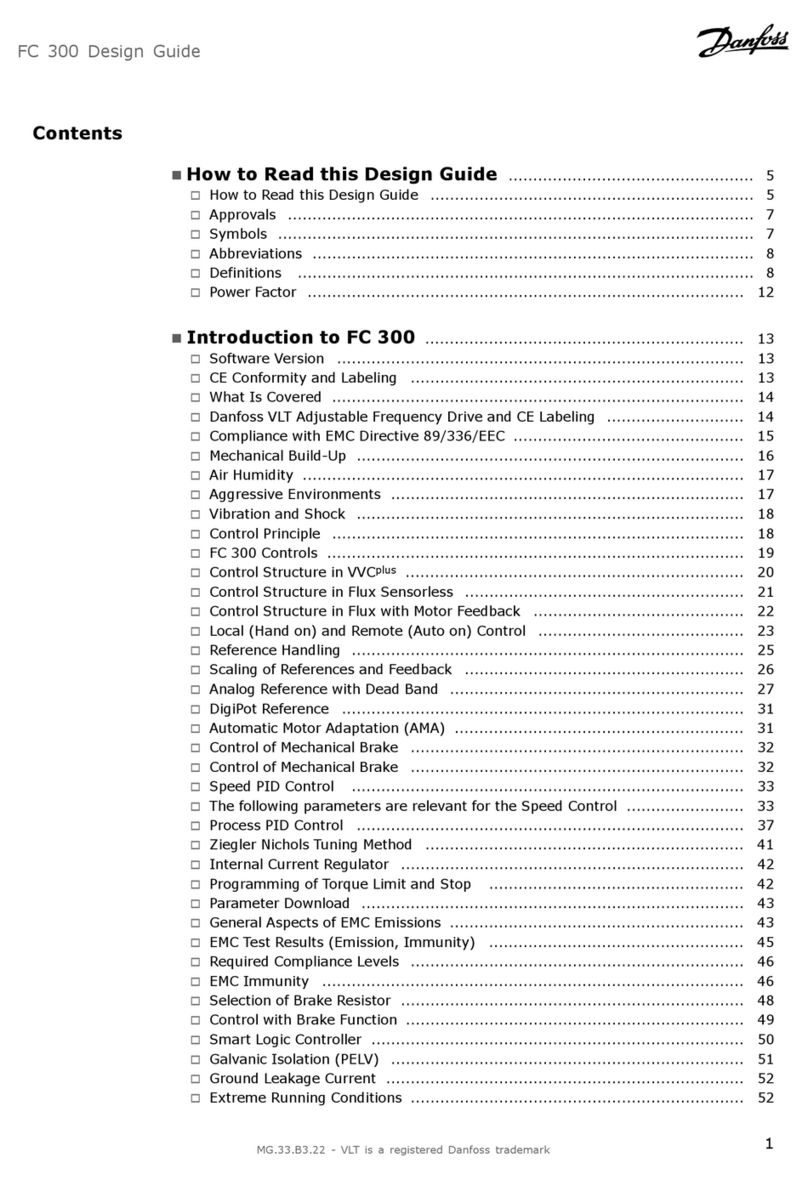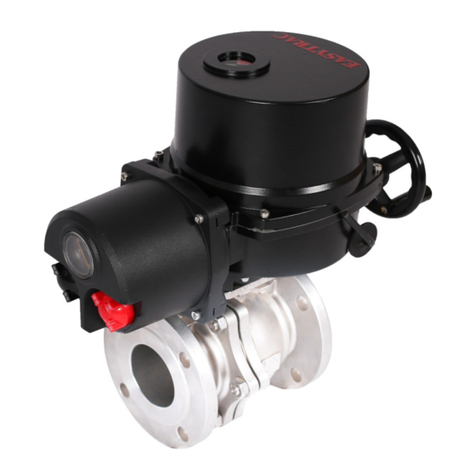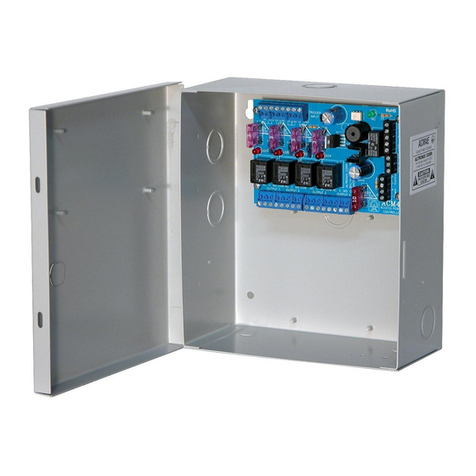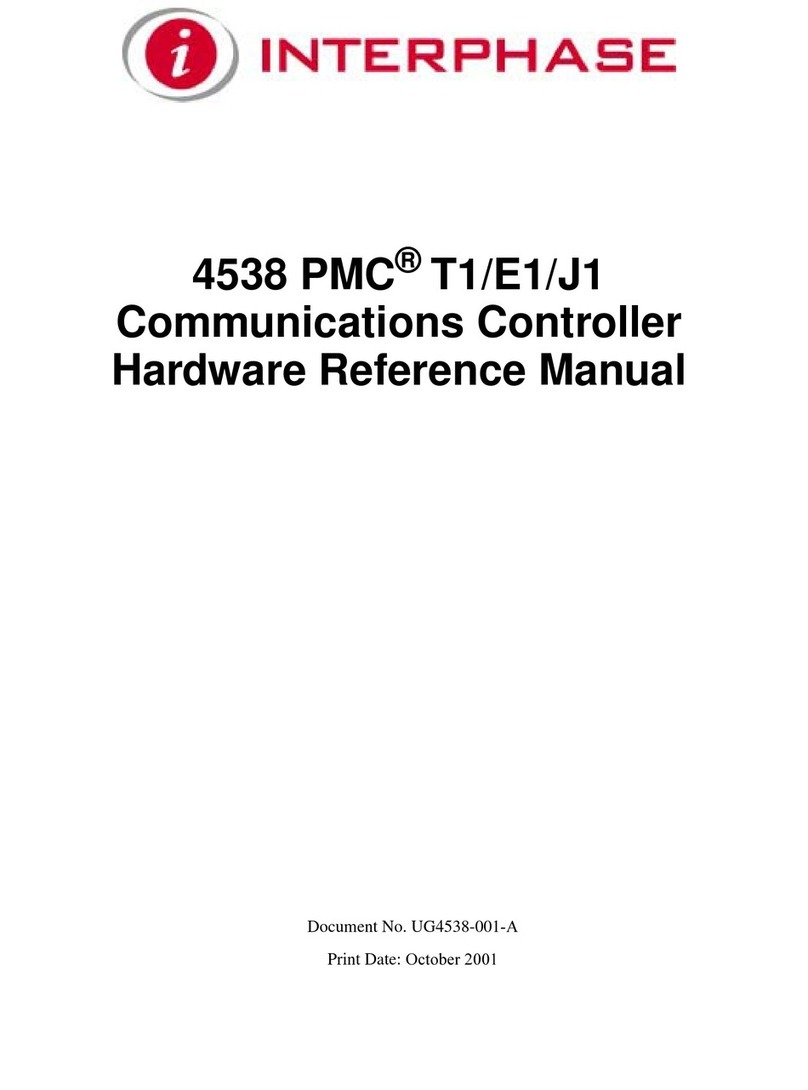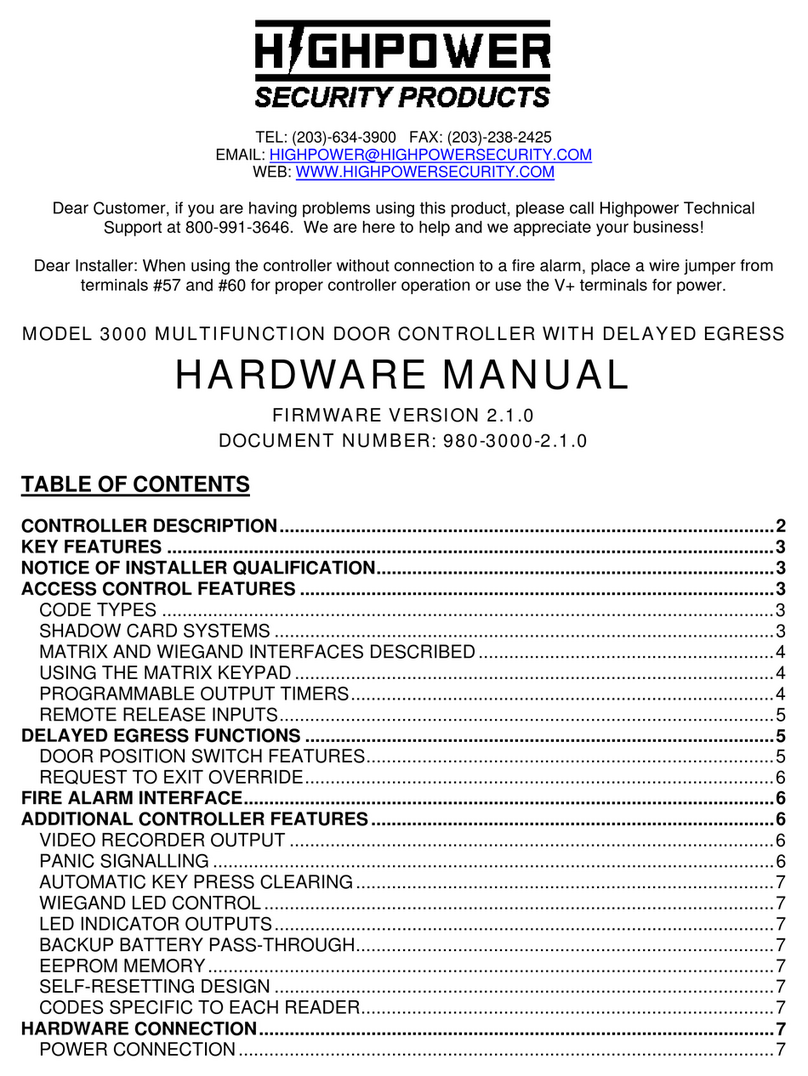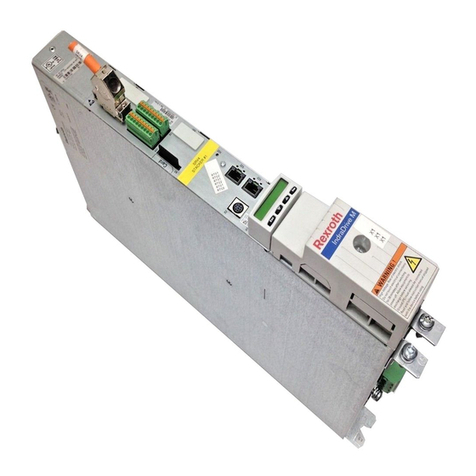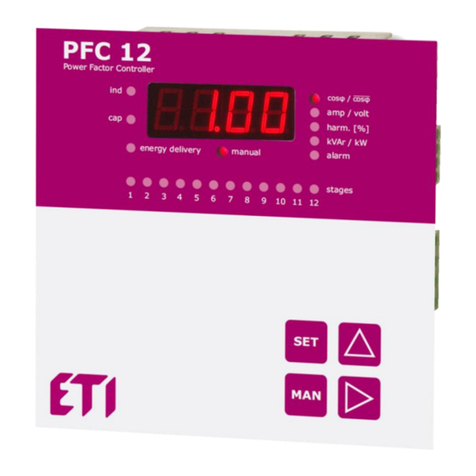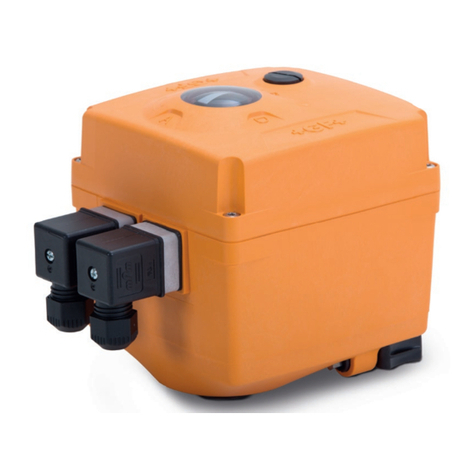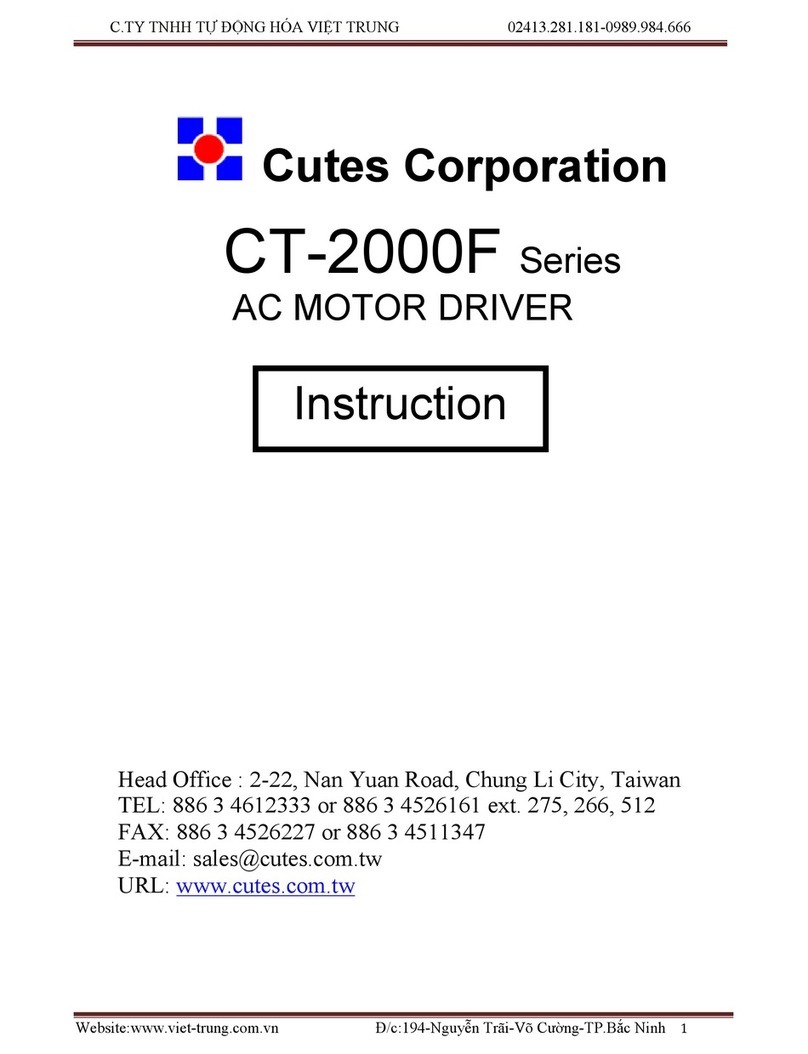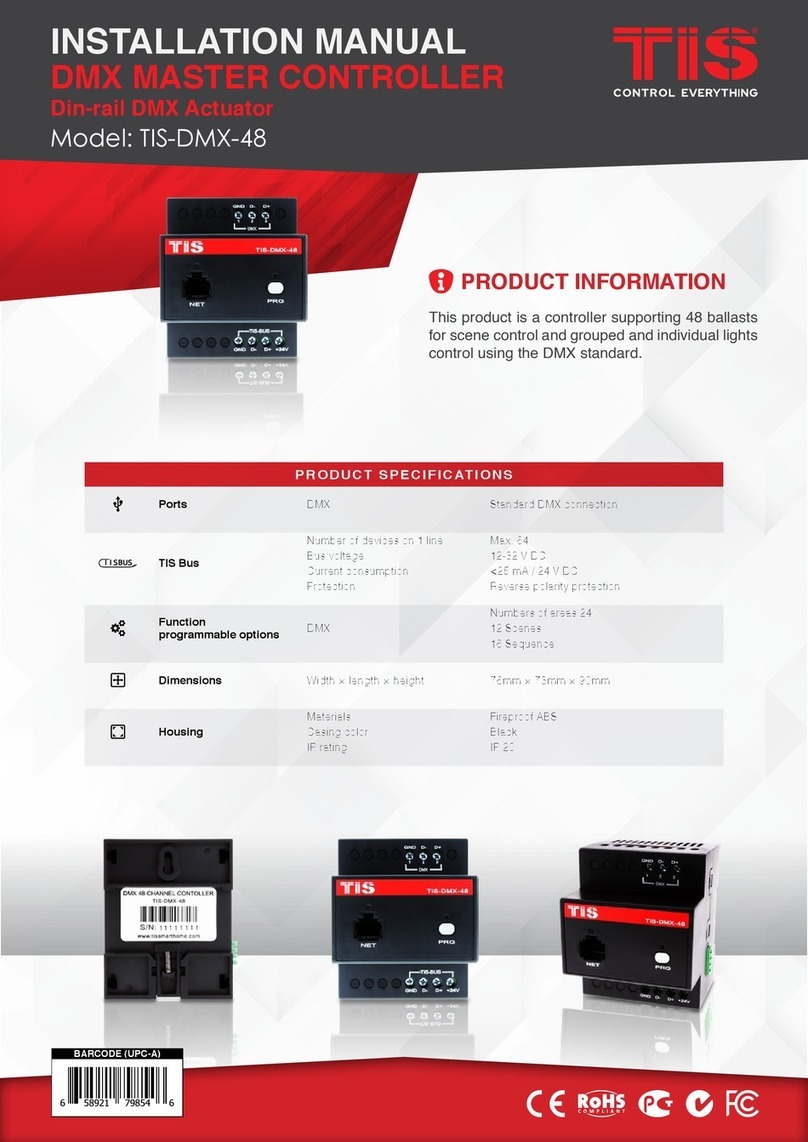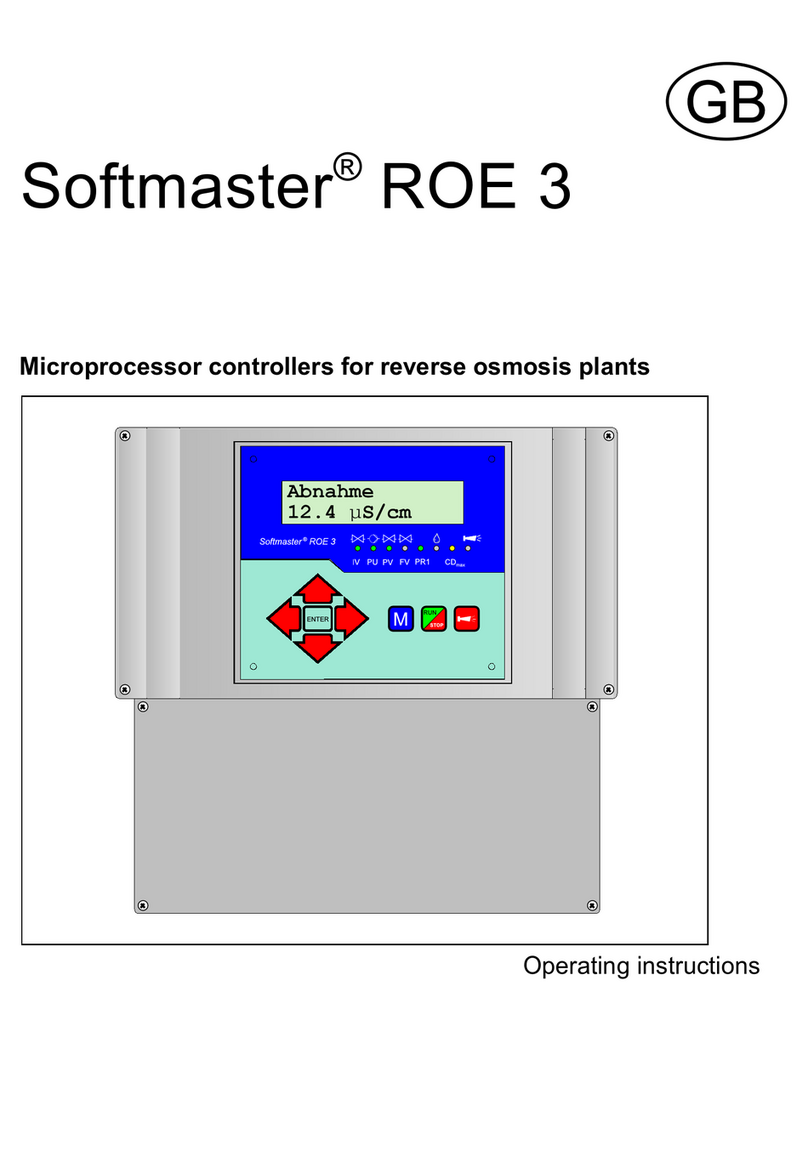
Converter design using the quasi-resonant
PWM controller ICE2QS03G
AN-PS0045
Application Note 12 7 April 2010
4.4.3 Leaving Active Burst Mode
The regulation voltage immediately increases if there is a high load jump. This is observed by one
comparator. As the current limit is 25% during active burst mode a certain load is needed so that regulation
voltage can exceed VLB (4.5V). After leaving active burst mode, maximum current can now be provided to
stabilize VO. In addition, the up/down counter will be set to 1 immediately after leaving active burst mode.
This is helpful to decrease the output voltage undershoot.
4.5 Current sense
The PWM comparator inside the IC has two inputs: one from current sense pin and the other from feedback
voltage. Before being sent to the PWM comparator, there is an offset and operational gain on current sense
voltage. In normal operation, the relationship between feedback voltage and maximum current sense votlage
is determined by equation (8).
PWM
pk
CSPWMFB VvGv += _(8)
The absolute maximum current sense voltage is 1V. Therefore, the current sense resistor can be chosen
according to the maximum required peak current in the transformer as shown in (9).
ppkCS IR _
/1=(9)
The design procedure of quasi-resonant flyback transformer is shown in [2]. In addition, a leading edge
blanking (LEB) is already built inside the current sense pin. The typical value of leading edge blanking time is
330ns, which can be thought as a minimum on time. In most cases, the normal RC filter to blocking the spike
because of MOSFET turn-on is not needed. However, in some applications, adding this RC filter is helpful to
improve the converter performance.
4.6 Feedback
Inside the IC, the feedback (FB) pin is connected to the 5V voltage source through a pull-up resistor RFB.
Outside the IC, this pin is connected to the collector of opto-coupler. Normally, a ceramic capacitor CFB, 1nF
for example, can be put between this pin and ground for smooting the signal.
Feedback voltage will be used for a few functions as following:
•It determines the maximum current voltage, equivalent to the transformer peak current.
•It determines the ZC counter value according to load condition
4.7 Zero crossing
The circuit components connected to zero crossing (ZC) pin include resistors RZC1 and RZC2 and capacitor
CZC. The values of three components shall be chosen so that the three functions combined to this pin will
perform as designed.
At first, the ratio between RZC1 and RZC2 is chosen first to set the trigger level of output overvoltage protection.
Assuming the protection level of output voltage is VO_OVP, the turns of auxiliary winding is Na and the turns of
secondary output winding is Ns, the ratio is calculated as
aO
S
ZCOVP
ZCZC
ZC
NV
N
V
RR
R<
+21
2(10)
In (5), VZCOVP is the trigger level of output overvoltage protection which can be found in product datasheet.
Secondly, as shown in Figure 3, there are two delay times for detection of the zero crossing and turn on of
the MOSFET. The delay time tDelay1 is the delay from the drain-source voltage cross the bus voltage to the ZC
voltage follows below 100mV. This delay time can be adjusted through changing CZC. The second one, tDelay2,
is the delay time from ZC voltage follows below 100mV to the MOSFET is turned on. This second delay time
is determined by IC internal circuit and cannot be changed. Therefore, the capacitance CZC is chosen to
adjust the delay time tDelay1 MOSFET is justed turned on at the valley point of drain-source voltage. This is
normally done through experiment.
Next, there is a foldback point correction integrated in this pin. This function is to decrease the peak current
limit on current sense pin so that the maximum output power of the converter will not increase when the input
















